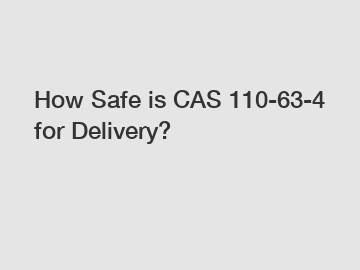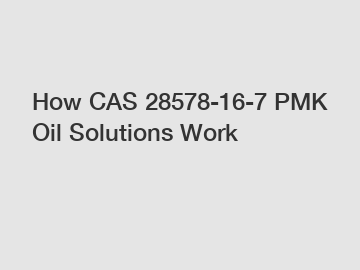WHAT ARE THE PRECAUTIONS FOR SEVOFLURANE?
Sevoflurane is a widely used inhalational anesthetic known for its rapid onset and offset, making it a popular choice in various medical settings. However, like any medical intervention, the administration of sevoflurane requires careful consideration of precautions to ensure patient safety and optimize the therapeutic benefits of the anesthetic. Let’s explore the key precautions associated with the use of sevoflurane.
Patient History and Pre-existing Conditions
1. Medical History:
Before administering sevoflurane, a thorough review of the patient’s medical history is essential. Special attention should be given to any history of allergic reactions, respiratory conditions, liver or kidney disorders, and cardiovascular issues. Understanding the patient’s health status is crucial for determining the appropriate dosage and monitoring during the administration.
2. Pregnancy and Lactation:
Caution is advised when considering the use of sevoflurane in pregnant or lactating individuals. While there is limited evidence of adverse effects, consultation with a healthcare provider is necessary to weigh the potential risks and benefits, ensuring the well-being of both the mother and the unborn or nursing child.
Respiratory Considerations
1. Respiratory Function:
Monitoring respiratory function is critical during the administration of sevoflurane. Patients with pre-existing respiratory conditions, such as asthma or chronic obstructive pulmonary disease (COPD), may be more susceptible to respiratory depression. Careful titration of the anesthetic and constant monitoring of oxygen saturation levels are essential in such cases.
2. Airway Management:
Proper airway management is imperative to prevent complications during sevoflurane administration. This includes ensuring the availability of appropriate equipment for intubation and ventilation, especially in patients with potential airway challenges. Adequate preoxygenation is recommended to enhance oxygen reserves in the event of respiratory depression.
Cardiovascular Precautions
Related articles:
What is Heavy Magnesium Carbonate 0.25-0.65g/ml Used For?
CAS 28578 vs. 16 7: Australia's Leading Solutions Compared
What Are the Benefits of Magnesium Hydroxide?
What are the advantages of HPMC in dry mix mortars?
Why Is CAS 6303 21 5 So Valuable?
Unlocking CAS 148553 50 8 for Australia: What You Need to Know
How to Compare Prices for Pure Hydroxypropyl Methylcellulose?
1. Hemodynamic Monitoring:
Continuous monitoring of cardiovascular parameters is crucial during sevoflurane anesthesia. Patients with cardiovascular conditions or those at risk of hemodynamic instability require vigilant observation. The anesthetic’s impact on blood pressure and heart rate should be closely tracked to promptly address any fluctuations.
2. Arrhythmia Risk:
Patients with a history of cardiac arrhythmias may be more susceptible to the arrhythmogenic effects of sevoflurane. Close monitoring and the availability of antiarrhythmic medications and equipment for defibrillation are recommended in such cases.
Drug Interactions
Careful consideration must be given to potential drug interactions when administering sevoflurane. Certain medications, such as beta-blockers and calcium channel blockers, can impact the cardiovascular effects of sevoflurane. A comprehensive review of the patient’s medication regimen is essential to identify potential interactions.
Occupational Exposure
Occupational exposure to sevoflurane is a concern for healthcare workers involved in the administration of the anesthetic. Adequate ventilation and the use of scavenging systems are recommended to minimize the risk of exposure. Healthcare providers should adhere to established safety guidelines to protect themselves from the potential effects of prolonged exposure.
Conclusion
In conclusion, while sevoflurane is a valuable tool in anesthesia, its safe administration requires a comprehensive understanding of the associated precautions. Patient history, respiratory and cardiovascular considerations, drug interactions, and occupational safety measures all play vital roles in ensuring a positive outcome. Healthcare providers must exercise caution, closely monitor patients, and be prepared to address any challenges that may arise during sevoflurane administration.
If you have further inquiries about the precautions for sevoflurane or are interested in sourcing this anesthetic, please don’t hesitate to contact us. As a trusted supplier, we are dedicated to providing healthcare professionals with high-quality pharmaceuticals and ensuring the safe and effective use of medical products.
Unlock Peak Performance: Master Intermittent Hypoxic Training
What Is a Liquid Nitrogen Cryotherapy Chamber?
What Are the Best 6303 21 5 Solutions?
What benefits do Multiplace Chambers offer?
What factors influence CAS 110-63-4 solution purchasing decisions?
Unlock Your Potential with Intermittent Hypoxic Training
Is Artificial Turf SBR Latex Right for Your Home or Business?
- Previous: What is Vanillin Used For? Surprising Uses You Didn't Know!
- Next: None










